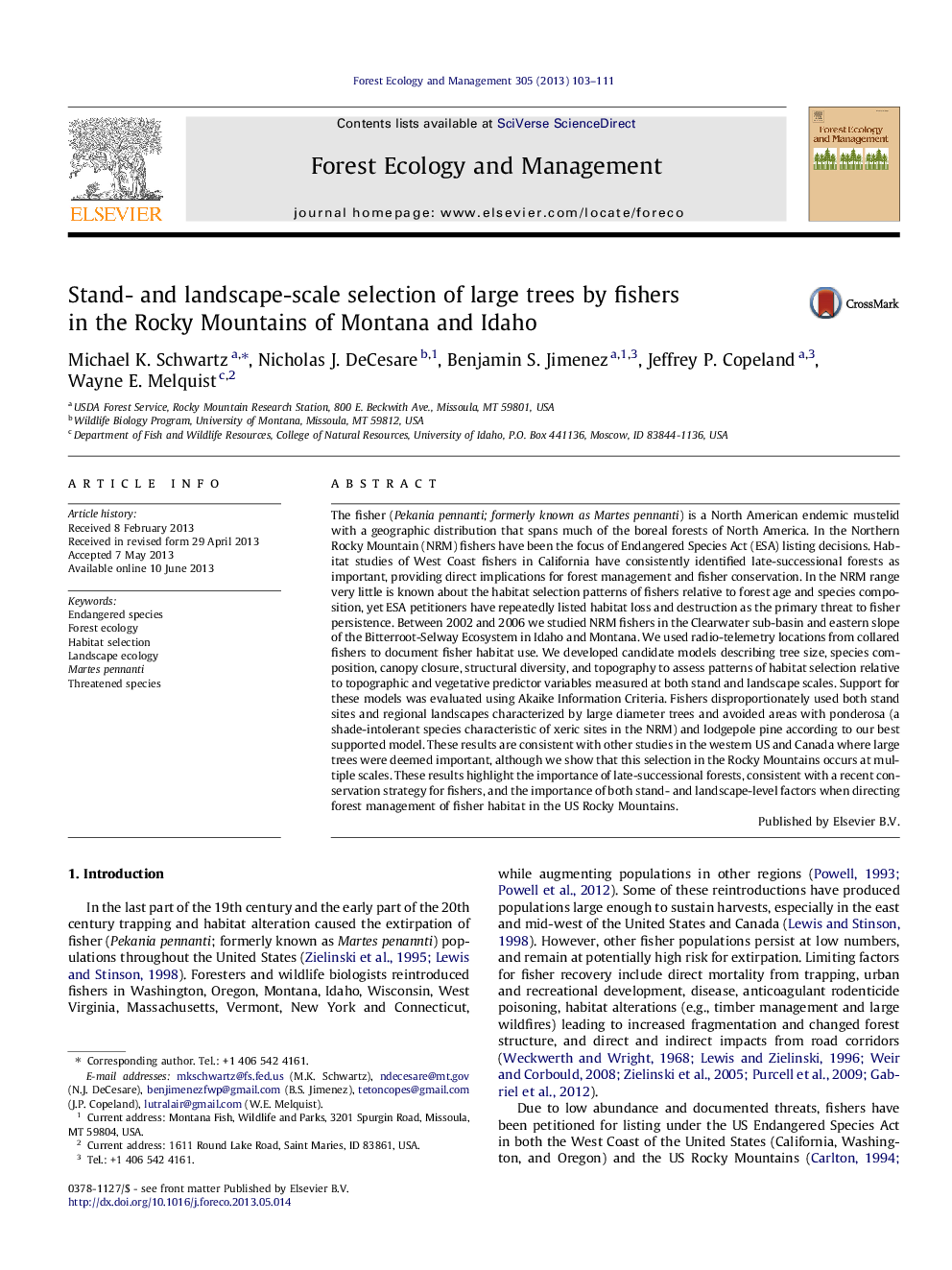| کد مقاله | کد نشریه | سال انتشار | مقاله انگلیسی | نسخه تمام متن |
|---|---|---|---|---|
| 86810 | 159215 | 2013 | 9 صفحه PDF | دانلود رایگان |

• We evaluated habitat use patterns of female fishers in Idaho’s Clearwater basin.
• We found fishers selecting for large DBH trees at both stand and landscape scales.
• Our models showed an avoidance of areas with pines and without structural elements.
• Fishers consistently select more concave, mesic landscapes.
• Forest activities providing multistage stands with structure provide needed habitat.
The fisher (Pekania pennanti; formerly known as Martes pennanti) is a North American endemic mustelid with a geographic distribution that spans much of the boreal forests of North America. In the Northern Rocky Mountain (NRM) fishers have been the focus of Endangered Species Act (ESA) listing decisions. Habitat studies of West Coast fishers in California have consistently identified late-successional forests as important, providing direct implications for forest management and fisher conservation. In the NRM range very little is known about the habitat selection patterns of fishers relative to forest age and species composition, yet ESA petitioners have repeatedly listed habitat loss and destruction as the primary threat to fisher persistence. Between 2002 and 2006 we studied NRM fishers in the Clearwater sub-basin and eastern slope of the Bitterroot-Selway Ecosystem in Idaho and Montana. We used radio-telemetry locations from collared fishers to document fisher habitat use. We developed candidate models describing tree size, species composition, canopy closure, structural diversity, and topography to assess patterns of habitat selection relative to topographic and vegetative predictor variables measured at both stand and landscape scales. Support for these models was evaluated using Akaike Information Criteria. Fishers disproportionately used both stand sites and regional landscapes characterized by large diameter trees and avoided areas with ponderosa (a shade-intolerant species characteristic of xeric sites in the NRM) and lodgepole pine according to our best supported model. These results are consistent with other studies in the western US and Canada where large trees were deemed important, although we show that this selection in the Rocky Mountains occurs at multiple scales. These results highlight the importance of late-successional forests, consistent with a recent conservation strategy for fishers, and the importance of both stand- and landscape-level factors when directing forest management of fisher habitat in the US Rocky Mountains.
Journal: Forest Ecology and Management - Volume 305, 1 October 2013, Pages 103–111